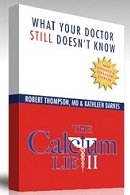|
Desk Exercises -
Protection
From Inactivity
Desk exercises are a necessity to ward of the
potentially serious effects of inactivity.
This applies even if you get the recommended amount of vigorous activity each day. Your regular vigorous exercise may not cancel the effects of inactivity for hours at a time.
The problem is that when you are sitting and are relatively motionless, the circulation of your lymphatic fluid slows right down. Remember, there is no pump like you heart to keep it moving. It depends upon the movement of muscles to push the fluid through the one-way valves of your lymphatic vessels.
Here are some ideas for desk exercises that will help to keep the blood and lymph flowing and prevent strain.

Move your feet and lower legs regularly. Tense and relax the muscles. Flex and extend your feet and lower legs. Tap your toes. Our feet need the most exercise, because the blood there has the furthest to travel to return to the heart. Lift one pelvic bone and then the other when sitting by tensing the butt muscles on one side at a time. Do desk exercises that use opposing muscle groups (flexors and extensors, e.g., biceps and triceps) to provide resistance. Push your palms together. Pull up with one hand while pushing down with the other. Push down on the arms of the chair. This is where you can dream up all sorts of your own exercises. Get a large-size stability ball, and sit on it with back straight and abs firm. Just sit, bounce or do basic toning exercises. You burn calories stabilizing your core and body on the ball. Perform Kegel exercises while sitting. Do a Kegel by simply tensing the muscles you would use to stop a flow of urine midstream. Hold each contraction for several seconds. Kegel's have many other health benefits for both men and women. Carefully bend your neck from side to side as well as forward and backward. Also, rotate your head from side to side. Don't sit still. Fidgeting is a good way to keep moving. Even something like tapping your foot. Set an audio reminder to remind you to do some desk exercise every 15 minutes. Put a sticky note where visible to remind you to move. Use these movement breaks to stand up and stretch, rearrange something, take a walk around your desk, do some squats etc. Always have water nearby to drink.
Being well hydrated
helps in so many ways. Just standing rather than sitting increases the heart rate by a few beats per minute. You will even think more clearly. If you can do some tasks while standing, do it. For example chatting on the phone. Five minutes of a more vigorous activity, such as walking for every 40 to 50 minutes of sitting, can protect from swollen legs. If you have the space near your work, have a rebounder set up and use it for short periods when you get the opportunity during the day. Rebounder exercise is the best way to get your stagnating lymphatic fluid moving. Keep your knees bent at about a 90-degree angle.
Your feet should remain flat on the floor. (no high heels)
Our body is not intended to remain still, but to constantly move.
Additional points to remember when using a computer for extended periods.

When typing, your wrists should be in line with your forearms and not bent up, down, or to the side. Your keyboard should be directly centered in front of you. An ergonometric keyboard can be helpful. It allows your wrists to be at a more natural angle. It is detrimental to your eyesight to focus at one thing for long periods of time (i.e. your monitor) so take breaks to look out the window and focus at something at a distance. Use an LCD screen. Follow the "20-20-20" rule--for every 20 minutes looking at your monitor, spend 20 seconds focusing on something at least 20 feet away. Most computers and individual programs have an option to increase font size. The top of your monitor should be at eye level, and directly centered in front of you. It should be about an arm's length in front of you. The desk surface should be at roughly belly button level. When your arms are placed on the desk, your elbows should be at about a 90-degree angle, just below the desk surface. The armrests of your chair should be at nearly the same level as the desk surface to support your elbows.
|
Keep up to date with
valuable insights into
pain management via
a healthy lifestyle.
Receive the monthly
Natural Pain Relief
Guide Newsletter.
News articles, health
tips, specials, freebies.
Enter your email and name
in the form to the right.
|
|
|
Check this out!
FREE BOOK
- help for your back, neck or sciatic pain.
NEWLY REVISED!
Great Special
Get it Now!
Finally - Get A Good Night's Sleep
|










New! Comments
Have your say about what you just read! Leave me a comment in the box below.